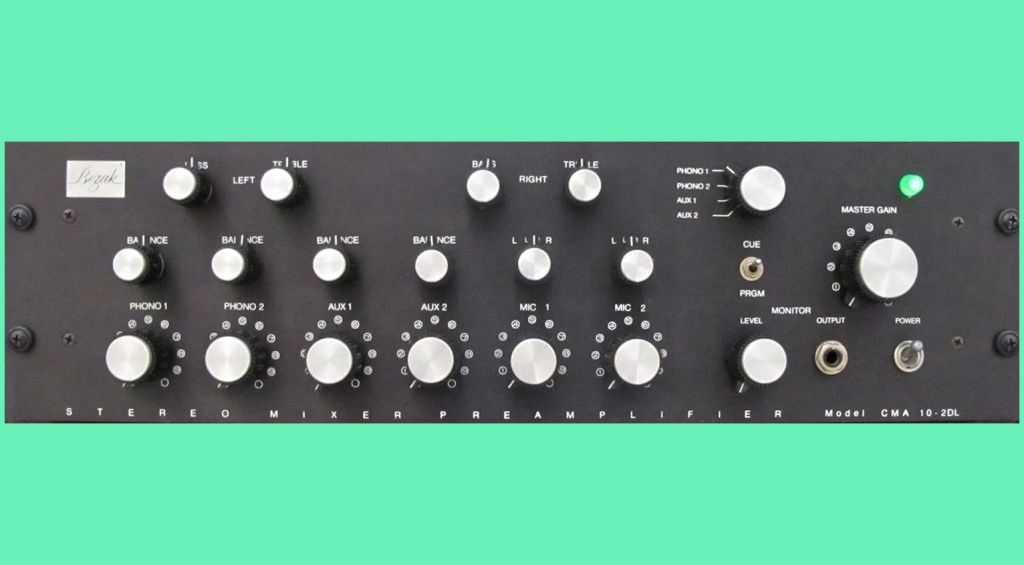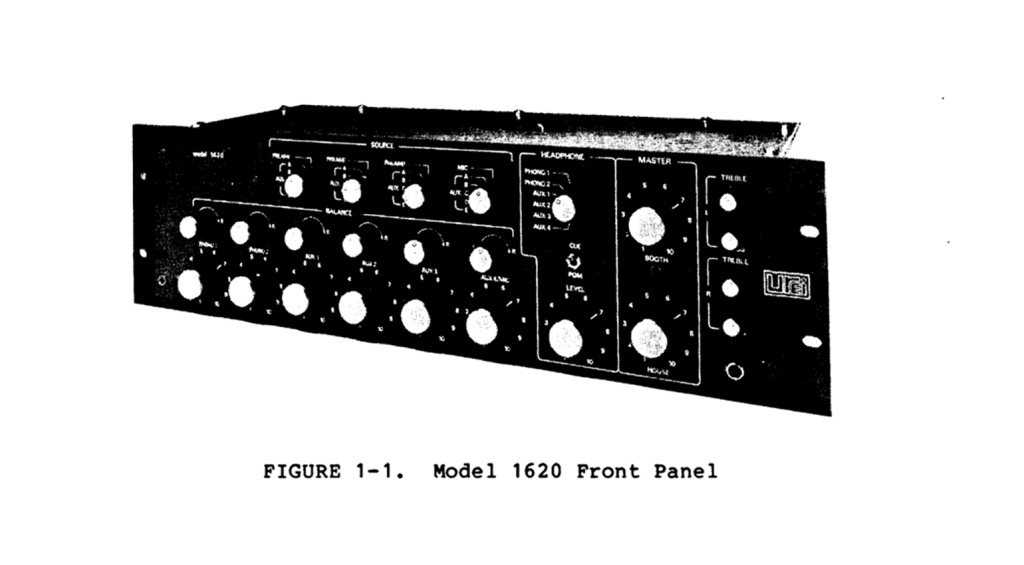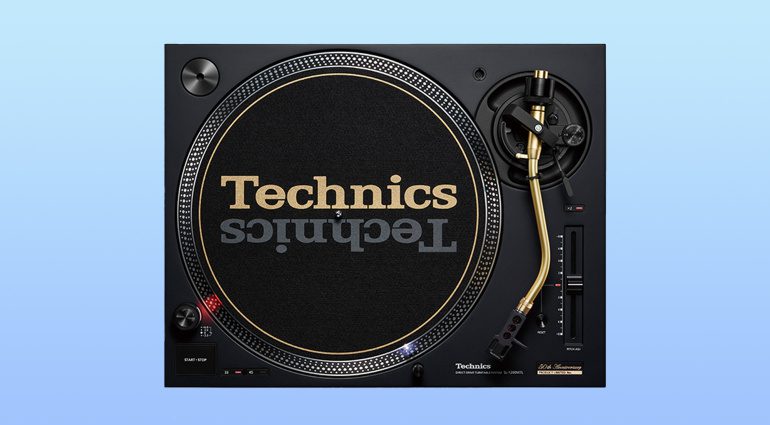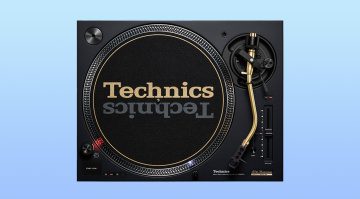The Loft, Paradise Garage and Studio 54 were all known for their incredible sound systems. But what gear was inside the famous DJ booths? Read on to find out.
Famous DJ Booths
New York was the club capital of the world in the 1970s. Thanks to a perfect storm of forward-thinking DJs, genius-level sound system designers and punters willing to turn a night out into a new form of self-expression, there was no better place to experience this cultural shift.
Clubs like the Loft, Paradise Garage and Studio 54 were not only havens for the freaks – both those of the industry and the ones who come out at night – they were temples to high-quality sound. Although their missions may have been different, each guided by different owners and DJs, they all placed an importance on sound quality, one that helped set the blueprint for what a club could and should be.
But what about their famous DJ booths? Often hidden away, they were closed-off control centers usually piloted all night by a single captain. Unlike later booths though, which all tended to have a similar selection of Technics 1200s, Pioneer DJ mixers and CDJs, these were more like audiophile listening rooms combined with radio station broadcast booths.
Let’s take a trip back in time to see what the top jocks used in the famous DJ booths of the top three clubs in New York in the 1970s.
Famous DJ Booths: The Loft
It’s hard to overstate the importance of the Loft parties in terms of clubs and dance music. Not a club per se but a private residence, the events held at 647 Broadway in New York City from 1970 to 1974 influenced a generation of DJs and promoters. They can be seen as something of a ground zero for not only disco but modern clubs in general.
David Mancuso, the DJ and driving force behind the Loft parties, was an audiophile. He brought this hi-fi sensibility to bear when setting up his sound system. “There are plenty of wealthy people who’ve spent obscene amounts of money on systems that they use for their own enjoyment, but nobody else has set out to run a weekly dance party using only high-end stereo components,” said author Tim Lawrence about David Mancuso.
Inside the Loft Booth
In his booth, David originally used two Acoustic Research AR turntables. Low-rumble and resistant to external shock, they made the perfect platters for a club-style environment. David’s cartridges of choice were from Koetsu, a Japanese company started by a swordsmith.
His mixer was custom-built, designed by Harry Muntz and put together by up-and-coming sound system engineer Richard Long (remember that name). These were early days for clubs and purpose-built DJ mixers were just in their infancy. The Bozak CMA-10-2DL and UREI 1620 wouldn’t come out until 1971, a year after David started his parties.

As for the sound system, it started with “two Klipschorn speakers, two Klipsch Cornwalls, two Klipsch Heresies and McIntosh amplifiers,” according to Tim Lawrence. To add an element of high-end, David conceived of an array of four tweeters, each pointing in a different direction, and suspended them from the ceiling. Alex Rosner, whose Rosie prototype DJ mixer eventually found its way into the Bozak and later UREI 1620, put them together for David. These tweeter arrays would become standard in nightclubs throughout the ‘70s and famously rose and fell above the dance floor at Studio 54.
Famous DJ Booths: Paradise Garage
In 1977, a new club opened at 84 King Street in SoHo. Housed in a former parking garage, it was called the Paradise Garage and it would become massively influential, not just on night club culture and dance music but pop culture in general. The high priest of the Garage was DJ Larry Levan, who had attended Loft parties and picked up a thing or two there about hi-fi audio.
Designed by the now very much in-demand Richard Long, the sound system was both loud and clear. It applied scientifically researched acoustic principles in the design, something common now but revolutionary at the time. It also had an exceptionally famous DJ booth.
Inside the Garage Booth
Although equipment changed over the club’s 10-year lifespan, the Garage and Levan prioritized sound quality above all. Accordingly, the booth featured not Technics SL-1200s, as were becoming nightclub standard at the time, but Thorens TD 125 belt drive turntables – three of them. These were home hi-fi turntables repurposed for the club because of their sound quality.
Ever aware of the power of sound, Larry would use cheaper cartridges earlier in the night, switching to Grace F9’s at peak time, according to In Sheep’s Clothing Hi-Fi.
Next to the turntables could be found a Technics 1505 reel-to-reel tape player. The open reel deck was the USB stick of the 1970s and ‘80s, letting the DJ play custom edits and remixes, something that Levan was particularly famous for.

For the mixer, the Garage employed either a Bozak CMA-10-DL2 or UREI 1620, the standards of the era. These featured additional customizations by Richard Long.
As for the sound system itself, not much is known about the speakers. In terms of amplifiers, In Sheep’s Clothing states, “the two amp racks that powered the house contained beautiful McIntosh amplifiers for the mids and highs. Crown PSA amps were used for the Bertha-like subwoofer cabinets, along with BGW amps such as the 750B and the Model 1000.”
Famous DJ Booths: Studio 54
Across town at 254 West 54th Street in midtown Manhattan, there was another famous disco. Perhaps the most famous disco of all time. This was of course Studio 54, and while it’s more famous for the celebrities that posed for pictures there, its sound system was also impeccable.
Inside the Studio 54 Booth
Designed by Richard Long, the famous DJ booth at Studio 54 featured a similar layout to that of the Paradise Garage: Thorens TD 125 turntables and either a Bozak CMA-10-DL2 or UREI 1620 mixer, depending on the night. According to a poster on a message board that claimed to have a professional relationship with the club, “the turntables used to be on a platform, floating on an elastic suspension made out of rubber bands in order to provide vibration isolation.”
In later years, visiting DJs could choose their own setup from among a number of components, including either the Bozak or UREI mixer, with Technics SL-1100, SL-1200 and SL-1200 MK2 models also available.
According to the website Disco Disco, the sound system at Studio 54 featured six three-way Waldorf horn-loaded bass reflex bass boxes, six Bertha/Levan bass horns, four Z tweeter arrays and two Ultima three-way full-range boxes as well as an RLA X-3000 DJ crossover.
Building Your Own Famous DJ Booth
These days, it’s much easier to get an all-in-one DJ controller and some quality DJ software if you want to be a DJ. However, if you prefer to go the old-school route, try two belt drive turntables with quality cartridges, a rotary DJ mixer and – if you can afford it – an audiophile-grade home hi-fi system. Happy DJing.






